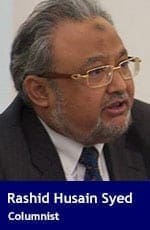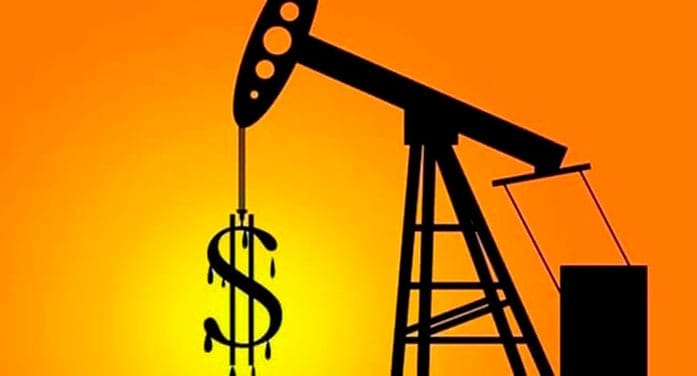 What did United States President Joe Biden gain from a trip that took him to Saudi Arabia, the state he once promised to make into the pariah he said it deserved to be?
What did United States President Joe Biden gain from a trip that took him to Saudi Arabia, the state he once promised to make into the pariah he said it deserved to be?
What did Biden get from meeting with Saudi Crown Prince Mohammed bin Salman, whom he has avoided until now?
In response to criticism about the visit, the U.S. administration said it was an attempt to bring Saudi Arabia and Israel closer. The intent was to transform the unstable Middle East into a formidable bloc that included Israel.
It was also meant to create openness in the relationship between Saudi Arabia and Israel.
Some movement was evident. As a concession to Biden, flights from Israel were finally allowed to use Saudi airspace. It’s a tiny step that carries great symbolic value. It overtly indicates the two states are slowly moving toward normalization – despite the unresolved issue of Palestine and the human cost it has extracted from the Palestinians.
But the real reason for Biden’s visit was to push the Saudis to open their oil taps further. Given the Western sanctions on Russia and the resultant tight demand-supply balance, global crude oil markets need more supplies.
 |
| RELATED CONTENT |
| Five reasons why Biden should ask Canada, not Saudi Arabia, for more oil By Deborah Jaremko |
| Energy East pipeline represents Canada’s salvation By Robert McGarvey |
| WEBINAR Alberta is committed to emissions reduction With Dale Nally and Yogi Schulz |
With mid-term elections approaching in the U.S., Biden can’t afford higher gasoline prices at home. Higher prices mean political suicide for Biden and his Democratic party. So Biden needed to act, and Saudi Arabia and the United Arab Emirates are the only possible options to provide help. Biden had to try to mend relations with the oil kingdom.
Did he succeed?
Yes and no.
Biden wanted more crude pushed into the markets and bin Salman needed recognition from the United States. The visit served both purposes.
Despite no formal announcement, there are indications of a tacit understanding. Reports say Saudi Arabia could start pumping more oil in September. But the decision needs to be deferred until the Organization of Petroleum Exporting Countries and its allies in OPEC+ meet in early August.
Saudi Arabia is under pressure on two fronts: from Biden and from Russian President Vladimir Putin. And it can’t stay oblivious to the sensitivities of Russia, its ally in OPEC+. The relationship with Russia has served the Saudis’ objectives well. Saudi Arabia can’t endanger that relationship.
Adding to the pressure, the Kremlin said on Wednesday that it hoped Biden’s visit to Saudi Arabia wouldn’t be used to try to foster anti-Russian relations. “We are within the framework of the OPEC+ agreements, and we highly appreciate the work that we manage to do with our partners, including with leading partners such as Saudi Arabia,” a Kremlin spokesman told a daily conference call with reporters.
“We highly appreciate our relations and our interaction with Riyadh, and we certainly hope that the building of relations and the development of relations between Riyadh and other world capitals will in no way be directed against us.”
The Saudis understand this well. As Biden wrapped up his trip, Saudi ministers insisted that oil policy decisions would be made according to market logic and within the OPEC+ coalition.
“We listen to our partners and friends from all over the world, especially consumer countries,” Foreign Minister Prince Faisal bin Farhan told reporters. “But at the end of the day, OPEC+ follows the market situation and will supply energy, as needed.”
There are also questions about Saudi Arabia’s spare capacity. Statista’s Katharina Buchholz said that in the past three years, Saudi Arabia only approached its declared maximum production capacity of 12 million barrels per day in one month.
The buffer of spare capacity has dwindled to “razor-thin” levels of just over two million barrels a day, the International Energy Agency reported recently.
“Saudi Arabia and OPEC+ have very limited spare capacity, and they have to manage it carefully,” Ben Cahill, a senior fellow at the Center for Strategic and International Studies, told Bloomberg.
According to an OPEC+ agreement, the Saudi oil production target is 11.004 million bpd for August. It has rarely reached this level and not for a sustained period. So it’s not certain that the Saudis can pump 11 million bpd or more on a sustained basis. It’s even less certain that it can quickly tap – if it wants to – into the 12.2-million bpd production capacity it claims it has, Tsvetana Paraskova said in a piece in Oilprice.com.
With Russian energy output under pressure, the energy world is in a quagmire. Despite Biden’s visit, wriggling out of it isn’t straightforward.
Toronto-based Rashid Husain Syed is a respected energy and political analyst. The Middle East is his area of focus. As well as writing for major local and global newspapers, Rashid is also a regular speaker at major international conferences. He has provided his perspective on global energy issues to the Department of Energy in Washington and the International Energy Agency in Paris.
For interview requests, click here.
The opinions expressed by our columnists and contributors are theirs alone and do not inherently or expressly reflect the views of our publication.
© Troy Media
Troy Media is an editorial content provider to media outlets and its own hosted community news outlets across Canada.

